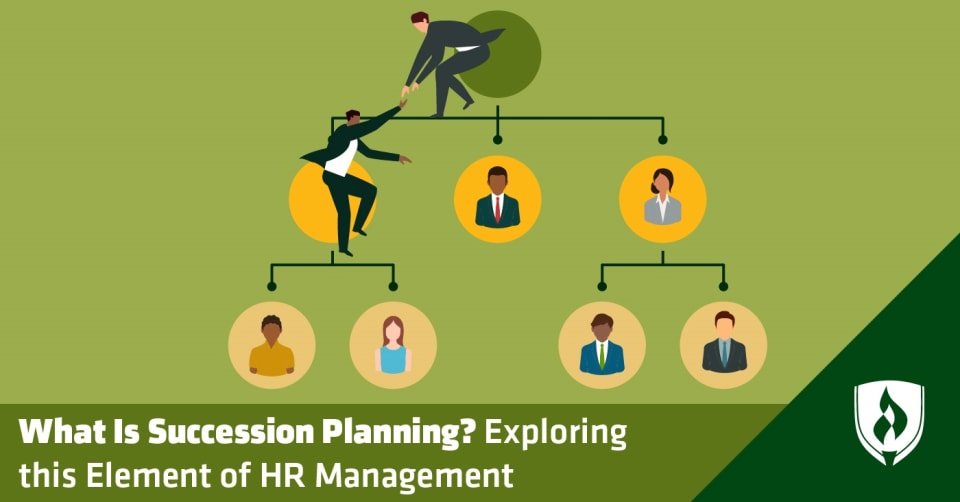
You’re no stranger to the inner workings of the human resources department. You’re well aware that HR is about more than processing payroll and hiring new recruits—especially when you reach the management level.
With your HR experience, you’re thinking it might be time to take the next step up the career ladder. But there are still a few details about upper-level HR tasks that you’d like to get a better handle on. Succession planning is one of them.
What is succession planning? It boils down to making sure that there’s a plan for filling vacant positions that are key to your company’s operations. It sounds simple on paper, but in practice, things can get a bit more complicated.
We reached out to HR professionals and business owners to gain their insights on the importance of succession planning and the steps that can make it a success.
What is succession planning?
Succession planning at its heart is simply preparing for the future so that your organization doesn’t experience any hiccups when important team members leave the company. No one stays in the same job forever. Whether an employee leaves due to retirement, another opportunity or an unexpected illness, it’s important to be prepared to fill those positions rather than scrambling when the inevitable happens.
“It is ultimately planning for your future self and what you want for your organization and your team,” says Shannon Walker, founder and president of WhistleBlower Security. She adds that many companies, especially small businesses, are “so busy running their day-to-day operations that they don't think about what three or five years down the road looks like for their company.”
There are two sides to succession planning: identifying roles and skillsets that require a plan, and finding and training the right employees who are already in your organization. “What it really breaks down to is improving or creating talent-management opportunities. You're securing your talent pipeline,” says Ty Stewart, president and CEO of Simple Life Insure.
This talent pipeline can lead to seamless transitions when the time comes for one employee to leave and another to step into their place. Rather than facing a stressful period of uncertainty, your HR team can calmly enact the succession plan you’ve had in the making for years.
The importance of succession planning
Succession planning may seem like a luxury rather than a necessity. Sure, it would be nice to fill a vacant VP of sales role immediately, but does it really matter if it takes some time to find the right person? In short, yes, it does.
Losing key team members can mean that other employees experience a lack of direction and momentum. The affected departments may begin to flounder and see decreased productivity. Other team members could even begin to wonder if it’s time for them to look for a new job elsewhere—so don’t ignore the potential negative ripple effects of lacking a solid plan.
“This planning is critical to supporting smooth operations, managing labor budgets and keeping morale high,” says Michael Alexis, CEO of TeamBuilding. “Failing to succession plan can result in a swift departure or loss of engagement for other team members.”
However, just because succession planning is important doesn’t mean every organization gives it the attention it deserves. “Succession planning is often an overlooked but critical function within the HR department,” Walker says. “Learning about best practices and assessing business needs are key aspects of what any HR specialist should strive for.”
If your organization needs to up its game in this area, the following best practices are here to help you get started.
Best practices for succession planning
Succession planning will look different for every organization depending on its unique needs as a company, but these expert best practices hold true across most situations.
Gain a strong understanding of the roles involved
You can’t just look at a job title and assume you know all the responsibilities an employee has taken on. Talk to employees to get a good sense of what their jobs actually entail. “In some cases, a team member may have unique skills that allow them to perform multiple roles within [one job title],” Alexis says. In this case, you may be looking for more than one person to fill their shoes someday. “Knowing the specific team members and their strengths and competencies will support this.”
Facilitate mentorships
What better way to build talent and expertise in lower-level employees than by asking more experienced professionals to share their resources and knowledge? “We know from HR industry research that employees who participate in one mentor-mentee relationship are almost 15 percent likelier to be retained year after year over non-mentored colleagues,” Stewart says. Those retained employees will be well positioned to step into the roles of their predecessors down the road.
Adopt an entrepreneurial mindset
Entrepreneurs are constantly looking toward the future, anticipating change so they can be ahead of the curve. This is exactly the type of forward-thinking mindset you’ll need to adopt when succession planning, according to Alexis. Five years down the road, your company and your industry could look very different than they do today. Being aware of these developments will help you prioritize the skillsets various roles will need in the future.
Common mistakes to avoid when succession planning
Just as there are best practices followed by successful HR professionals, there are also common mistakes to avoid when succession planning. Stay away from these pitfalls to make sure your succession plans run smoothly.
Don’t create a succession plan for every role in the company
It’s a waste of your time and energy to worry about a succession plan for every job in your organization. Rather than planning for roles that are easy to fill, focus on the key players in your company. High-level executives are an obvious choice, but don’t forget about the beloved manager who keeps morale high or the specialist who seems to have irreplaceable knowledge.
Don’t expect immediate results
It’s always satisfying to see the results of your hard work next week—but that’s not how it works in succession planning. You may have years of planning ahead of you before you get to see your work succeed. “The fruits of your succession-planning labor happen at exit time,” Stewart says. “You have to realize this is playing the long game, not something you can set up and measure effectively in a year or two.”
Don’t ignore succession planning
By far the biggest mistake an organization can make is choosing not to prioritize succession planning. It can take years to fully create and implement a strong succession plan, and the future is coming closer every day. Don’t wait to start planning until it’s too late!
Is succession planning in your HR future?
Now you can cross “What is succession planning?” off your list of HR career questions and move on to planning your own future.




